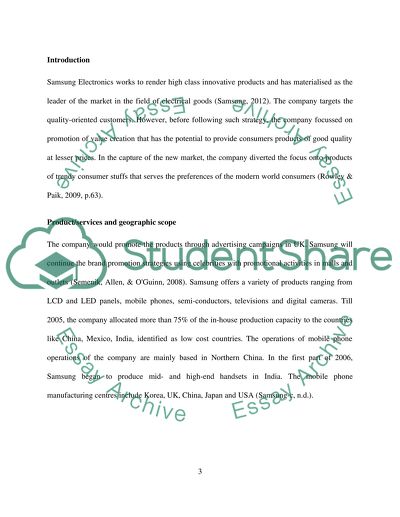Cite this document
(“Samsung Company analysis Essay Example | Topics and Well Written Essays - 2500 words”, n.d.)
Samsung Company analysis Essay Example | Topics and Well Written Essays - 2500 words. Retrieved from https://studentshare.org/macro-microeconomics/1402539-samsung
Samsung Company analysis Essay Example | Topics and Well Written Essays - 2500 words. Retrieved from https://studentshare.org/macro-microeconomics/1402539-samsung
(Samsung Company Analysis Essay Example | Topics and Well Written Essays - 2500 Words)
Samsung Company Analysis Essay Example | Topics and Well Written Essays - 2500 Words. https://studentshare.org/macro-microeconomics/1402539-samsung.
Samsung Company Analysis Essay Example | Topics and Well Written Essays - 2500 Words. https://studentshare.org/macro-microeconomics/1402539-samsung.
“Samsung Company Analysis Essay Example | Topics and Well Written Essays - 2500 Words”, n.d. https://studentshare.org/macro-microeconomics/1402539-samsung.


